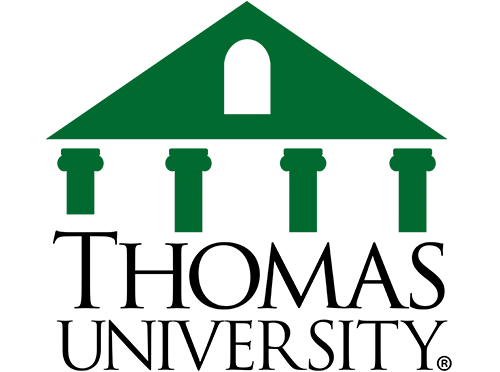It is important to be aware of your academic progress and how it impacts financial aid eligibility.
Your Satisfactory Academic Progress (SAP) is assessed after each term. If you have not made satisfactory academic progress, the Office of Student Financial Aid and Scholarships will work with you and your
advisor to get you back on track academically and help you keep your financial aid eligibility.
Who is Affected
Federal financial aid regulations require that students receiving financial aid be monitored for satisfactory academic progress toward the completion of their program of study. All applicants for state and federal student financial aid are evaluated. Recipients of some alternative loans and scholarships also must meet these policy requirements.
What is Evaluated
- Completion Rate
- Grade Point Average
- Maximum Enrollment Limit
- Multiple Withdraws in One Year
- Multiple Terms Without Passing Grades
Details of each requirement are given below. You must comply with all four elements listed in this section to be placed in Good Standing for financial aid eligibility.
Completion Rate
You must have passing grades for at least 67% of both:
- TU attempted credits
- Overall attempted credits
Overall attempted credits are TU attempted credits plus all attempted transfer credits which appear on your grade record, with grades of : A, B, C, D, F, I, IP, M, NP, P, W, or X. Passing grades are courses with grades of: A, B, C, D, or P.
Cumulative Grade Point Average
You must maintain at least a 2.00 cumulative GPA for both:
- Overall credits: TU credits plus all accepted transfer credits
- TU credits
Maximum Enrollment Limit
The Maximum Enrollment Limit for undergraduate students is 192 attempted credits and 90 attempted credits for graduate students. This includes all TU attempted credits + all accepted transfer attempted credits. You will be immediately placed in Suspended eligibility status if your transcript shows you have exceeded your maximum attempted credits.
Impact of Multiple Withdraws
If you receive federal or state financial aid and then withdraw from all classes within the University’s Add/Drop period two times in an academic year, you will be placed in Suspended eligibility status immediately after the second withdrawal.
Impact of Multiple Terms Without Passing Grades
If you receive federal or state aid and then have two terms in the academic year without any passing grades, you will be placed in Suspended eligibility status immediately after the second term of all non-passing grades.
When is Academic Progress Evaluated?
Your academic records are reviewed at the end of each term of enrollment and your satisfactory academic progress status for the next term will be determined. If you have reached the 180 credit Maximum Enrollment Limit, you will be placed in Suspended eligibility status immediately. If you have a second term of total withdrawal within the Add/Drop period for the academic year, you will be placed in Suspended eligibility status immediately.
Warning Status
If you do not meet the completion rate and/or the GPA requirements, you will be placed in Warning status for the next term of enrollment. If you are in Warning status, you will be eligible to receive available financial aid for one term. However, you must complete an online Web Advisor Session within the first two weeks of the term. This session will review the satisfactory academic progress policy and provide resources designed to improve academic standing. If you fail to complete this session within the first two weeks of the term, a hold will be placed on future financial aid disbursements until this session is completed. After your Warning term, disbursements may be delayed while your academic progress is reviewed. If you do not achieve Good Standing by the end of your Warning term, you will be placed in Suspended eligibility status.
Suspended Eligibility Status and Appeals
Students placed in Suspended status are not eligible to receive federal or state financial aid. In addition, some alternative loan and scholarship programs require students to be in Good Standing under satisfactory academic progress guidelines.
If you are in Suspended status, you may submit an appeal in writing to the Office of Student Financial Aid & Scholarships which documents special or unforeseen circumstances that interfered with the completion of your coursework or in meeting any other part of the policy.
Submitting an Appeal
The appeal must include an academic plan that will bring you into Good Standing or that will satisfy any remaining requirements to complete your degree. You will complete the Appeal in collaboration with your success advisor.
Appeals must be submitted by the end of the second week of the term. Appeals submitted after the deadline will be reviewed but late petitions may result in the loss of funding for the term. If an appeal is approved, you will be placed in Probation status and will be eligible to receive financial aid.
You must follow this Academic Plan for each term of Probation status until you reach Good Standing. If you do not pass the credits and/or earn the GPA given in the Academic Plan, you will be placed in Suspended status again.
Review your Satisfactory Academic Progress status in your Hawklink.
- Log into your Hawklink
- Select the aid year
- Click my “My Financial Aid”
In Suspended Status?
- Click on the “My To Do List” in your Hawklink. Complete and print the Satisfactory Academic Plan Form
- Meet with an success advisor to discuss your status and Academic Plan
- Submit the completed petition, with documentation, to Financial Aid
In Probation Status?
- You must meet the requirements listed to continue receiving aid
In Warning Status?
- Go to your Hawklink and click “My Financial Aid”
- Click on the SAP Warning Video and complete the online session


